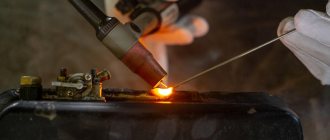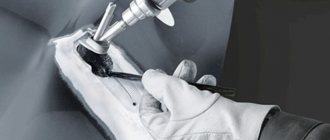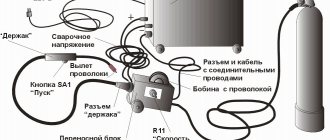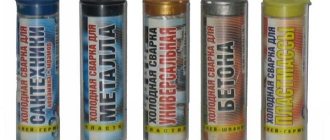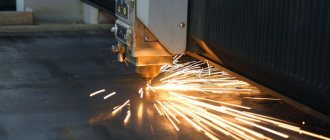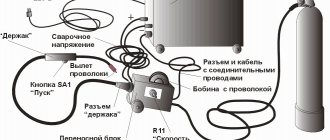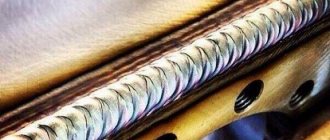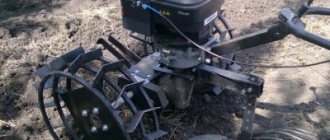Forge welding is perhaps the oldest method of joining metal. Blacksmithing was the only method of processing steel for several thousand years, until specialists mastered foundry in the 19th century. And in the 20th century, technological progress developed, as a result of which other progressive methods of connecting metals became available to humanity. Because of this, forging has lost its relevance. Today this craft exists only formally, at the request of some artisanal specialists.
Basic principles
Forge welding is a manufacturing process that creates permanent connections between metal components using high temperature and impact pressing. In other words, metal fragments are heated in a special furnace to a fluid state and they are connected using impact tools on a metal base. The whole process consists of the following steps:
- preliminary preparation of the surfaces to be joined;
- thermal heating to a given temperature;
- connection using percussion instruments;
- final forging, allowing you to set the required shape.
The most important condition in this matter is heating the metal using high temperatures. Bringing the metal to the required temperature is controlled by changing the color of the hot surface. Thus, upon reaching a temperature of 1300 degrees, the iron becomes bright yellow. As the heat increases to 1400 degrees, it begins to turn bright white. When the required temperature condition is reached, the connection should be made immediately. Otherwise, the quality of the product may suffer due to burnout of the material, which is accompanied by the formation of an excessive layer of scale.
Areas of application
Forging is considered an ancient craft and is currently used by artists and blacksmiths. They use this technology to create various decorative and design products from a metal base. Sometimes forge welding is used to make knives.
It is worth noting! This method of welding technology is used by blacksmiths to produce various types of composite tools - axes, plows and other agricultural products.
But all industrial welding methods are gaining high popularity. This is due to the fact that forging has a number of disadvantages:
- slow heating;
- weak strength;
- low productivity;
- heterogeneity of sedimentation processes;
- it must be carried out by qualified professionals.
Forge welding of stainless steel and metal has many important nuances and features on which the strength of the welded joint depends. This ancient welding method has survived to this day, but it has not lost popularity. It is still used to create a variety of structures from a metal base.
Peculiarities
Compliance to joints, due to thermal diffusion, using high pressure, when bringing the material to a soft plastic state, as a rule, has significant differences between different types of metals and components. Thus, low-carbon steels with a percentage of carbon not exceeding 0.6% are considered flexible to joints. If the percentage increases, the overall ability to combine weakens.
Alloy steels, as well as non-ferrous metals, including their alloys, are difficult to forge. In addition, it is absolutely impossible to connect all types of cast iron in this way. The main obstacle to the joining process during thermal diffusion is the formation of a layer of scale on the heated surface. This layer is formed by refractory oxides called FeO and Fe3O4, which have a weak ability to melt when exposed to a temperature that is sufficient to weaken the main surface of the metal.
To reduce the influence of oxides that create interference, the surface that is supposed to be subjected to the procedure is coated with special fluxes for forge welding. They are acidic in nature. Most often, table salt or boric acid is used for this purpose. A hardened forge welding borax may also work. In other cases, the use of flux is replaced by some available materials. This, for example, can be broken glass, as well as fine sand from the river bank, which can replace forge welding with borax.
This welding is considered one of the most complex processes in technological terms, as it requires a lot of knowledge and practical skills from the specialist. For example, it should be understood that the ability to join a metal appears only when a certain temperature is reached. If the surface is not heated sufficiently, a defect called lack of penetration will result. And if the metal is overheated, a burn will form, which will also not bring the product into high-quality shape.
general information
Forge welding (also known as forging welding) is a method of joining metals, the essence of which is to form a weld using forging tools. The metal is brought to a plastic state and struck with a forging hammer. Before the invention of RDS, this welding method was used everywhere. But now forge welding is used only for joining parts made of low-carbon steel.
To get a high-quality seam, you need to thoroughly clean the metal. Contaminants and corrosion should not prevent the weld from forming during forging. But you need to understand that forge welding is labor-intensive and low-productivity work. In addition, the seam is not as strong as desired. For this reason, forging welding is not used in production, but remains the domain of private workshops. However, with the help of such simple technology, you can perform simple repairs in the field with your own hands.
Conditions
To perform actions using these techniques, you should adhere to only one mandatory rule - the ends of the workpieces must have a convex shape and also have thickenings at their ends. This condition must be observed because in the process of making connections using the forge welding method, a slag film is formed on the surface of the metal while the workpiece is heated. And if the surface has convexities, then slag particles can be squeezed out. The thickenings formed at the ends of the blanks intended for forging serve as a technological reserve in the process of acquiring the required shape.
Forge Welding Process
Step 1. Cleansing.
The process begins with preparing the surface to be welded. A high-quality connection is possible only if oxide films and other contaminants are removed from the surface of the workpieces.
Step 2. Heating the workpieces.
For this purpose, a forge or muffle furnace is used. The best fuel option is charcoal or coke. They contain a very small percentage of sulfur, which reduces the strength of the seam. But most often they use ordinary coal. It is desirable that the percentage of sulfur does not exceed 1%, and ash - 7%. Pay attention to the size of the coal. It should not be too large and well sifted. There is no need to rush to send the metal into the furnace. It is important to wait until the coal burns well so that most of the sulfur burns out of it.
The ends of the workpieces are heated to values exceeding the forging temperature. Low carbon steel is brought to 1350 - 1370˚C. Its distinctive feature is its dazzling white incandescent color. For materials with a high carbon content (for example, U7 steel) a temperature of 1150°C is required. It will give a white incandescent color with a yellowish tint.
When welding workpieces whose steel differs, heating should begin with the one with the lower carbon content - subsequently its temperature will be higher. After some time, you should start heating the second billet with a large amount of coal.
Step 3. Using flux. When working at high temperatures, active scale formation occurs. There is a risk of burning the metal. To avoid this, use flux. It is sprinkled on the workpiece at the moment of heating to 950 - 1050°C. The composition of the flux varies:
- Fine river sand . It must be washed, separated from clay and impurities, well dried and sifted.
- Silicate sand and soda . Used before, now the composition is not very popular. Some craftsmen use ground glass scrap to imitate this composition.
- River sand and borax . Borax - sodium tetraborate (Na2B4O7) - is about 10%. Also called "Borax". The mixture must be calcined to remove as much water as possible from the composition. This option is more effective than sand alone. Borax slags better and cleans metal. If the coal is poorly cleaned and produces a lot of slag, the use of this substance is simply necessary! In an emergency, borax can be replaced with salt.
- Pure borax . Many blacksmiths use it separately due to the high melting point of sand.
Approximate cost of welding flux on Yandex.market
A thick layer of flux makes work and heating difficult. Therefore, any composition must be applied in a thin layer.
It is necessary to coat the part with flux at a considerable distance from the fire so that the mixture does not melt during the process.
When heating small workpieces, it is more convenient not to sprinkle them with flux, but to stick the hot end into sand or another mixture. To do this, the composition must be in a metal container. Then the workpiece is returned to the fire and heating continues.
Step 4. Welding.
After reaching the required temperature, the workpieces are removed and cleaned of slag. The parts are joined or placed on top of each other, after which light and frequent blows are applied. In this case, the remaining flux and slag are squeezed out of the seam. The joint surfaces are pressed tightly at this moment, and this protects them from oxidation. The process is completed with frequent and strong blows from the middle to the edges. This allows you to avoid lack of fusion, cracks, and bubbles, which ultimately increases the strength of the entire forging. It is important to pay attention not only to the welding site, but also to forge the areas adjacent to it.
Forge welding methods
Forge welding happens:
- overlap.
- Cut to pieces.
- Butt-butt.
- Spinner.
Necessary equipment
For forge welding you need:
- Forge or oven.
- Anvil.
- Blacksmith pliers.
- Hammers (from a plumber's hammer to a pneumatic hammer).
View this post on Instagram
So I got to the forge. He assembled the body of the ax with the blade, heated it, secured it, then welded it with forge welding and tapped it thoroughly. Then I trimmed off the excess metal that had come out and straightened the shape on the anvil horn. It looks nice... Now we need to widen the opening and shape the striker on the butt of the axe. #VaryagCraft #dyiAlmaty #ForgingAlmaty #Axe #CraftAlmaty #ScandinavianAxe #Forge welding
A post shared by Danil Svetlakov (@varyag_craft) on Jan 16, 2019 at 11:53pm PST
Other technologies
There are also more complex forge welding technologies that allow you to create products that play the role of components in complex mechanisms or represent decorative elements in various design compositions:
- One of these methods is the proven split welding. This technique was used in the past, joining strips of steel together in the process of making the metal tires needed for village carts.
- The next method is welding using checkers. This technique is effective when connecting dimensional components.
To carry out split welding, the processed edges of the strips undergo special preparation. They are first pulled back and then cut in such a way that before welding it becomes possible to connect by overlap. Only after this the fragment is heated until the required temperature is reached and welded using forging. The second method of forge welding steel involves the use of an additional element. These elements are called checkers.
Let's sum it up
Welding using the forging method allows you to join metals quickly. Such cases are known when it comes to the forging production of knife products, as well as stainless steel structures.
Despite the fact that the method is losing its relevance, it is considered special. This can be evidenced by handmade work, which is widely used in the forge.
Modern welding techniques boast practicality and speed of implementation. Forging metalworking (forging) gives products a special status.
Have you been able to work with this method? What were your impressions? Write your opinion in the comments. We wish you success!
Application area
Forge welding today is no longer the main method of joining metals. It is used mainly for the manufacture of complex metal components in the intricate patterns of artistic forging masters. Artistic welding of metal fragments allows you to create the most incredible shapes that decorate various facades.
In addition, this welding method is sometimes used for the manufacture of some hand tools needed in everyday life. But it has lost its industrial significance due to low productivity compared to other connection methods.
Treatment
When it comes to the production (welding) of artistic products, then it is impossible to do without finishing work. This allows you to make the design attractive.
If this is important to you, you can finish the finished material. To do this you will need a blacksmith's tool.
This step is not considered mandatory, but can be used in rare cases. Also, parts are occasionally polished and quartzed when repairs are made.
Brushes that contain metal bristles help with this. Polishing paste allows you to make the structure smooth.
Minuses
The disadvantages of this technology include:
- low heating rate;
- insufficient strength of the resulting joints;
- significant heterogeneity of settlement processes;
- high qualification requirements from performers.
Only a few industrial units continue to use forge welding. Currently, this technology continues to be used to produce metal water pipes with a diameter of no more than 100 mm. To create the conditions for this procedure, strip steel is heated in special furnaces and then rolled linearly through rolls. Next, they are pulled through the mandrels at high speed. In this way, general welding of the seam of a water pipe occurs under the influence of high pressure.
Also on an industrial scale, forge welding is still used in the manufacture of complex bimetallic plates. Typically, this is done by rolling hot billets together through special rollers or using the pressing method using thermal ovens under vacuum conditions. Forge welding allows you to give a multilayer structure to products, which in some cases is of great importance.
Advantages and disadvantages
Disadvantages of forge welding:
- Provides relatively low connection reliability.
- Low productivity , requires a lot of effort and time.
- Not suitable for production scale.
- Suitable for welding not all types of metal.
- A highly qualified master is required for a high-quality result.
Advantages of forge welding:
- Increases the cost of the product.
- It is the only way to obtain some materials (for example, Damascus steel, mokume, layered steels).
- Creates a colorful appearance of the product.
- Sometimes used for welding large workpieces .
- This type of welding is easy to master .
- Requires a minimum of special equipment.
Equipment and materials
To set up a small forge for the handicraft production of some products or the manufacture of artistic forging elements, not much is needed.
If you have certain equipment and a few tools, you can easily set up your own production of forge metal welding:
- First of all, you need one stationary forge and one portable one. This is a special device necessary for heating the surfaces to be welded. An ordinary gasoline autogen could very well become a portable forge.
- Next, a group of anvils is required. It is important that there be both large and small. Moreover, it is not enough to have only a two-horned anvil. The one-horned one should also be present.
- A set of blacksmith pliers made up of as many sizes as possible.
- A set of forging hammers that will allow you to carry out the basic forging process.
- Two containers designed for cooling materials. One of them must be filled with water, and the other with oil.
Forging
Once you have heated the part, place it on the anvil. It is immediately necessary to make firm blows on the device to clear the part of debris. After this, place the two heated parts side by side and hit them lightly with a special hammer.
To prevent the metal from oxidizing, it is necessary to make frequent and rhythmic blows. The parts must be connected securely. After this, hit the workpiece harder, but do not lose the rhythm.
High impact force will ensure tight joining and obtain a uniform shape of the parts. They will finally unite with each other. To increase density, it is necessary to forge not only the ends of the structure.
Pay attention to all areas. Forging begins in the middle of the structure and smoothly moves towards its edge. This will ensure uniform release of slag.
When forging is completed, you can warm up the finished structure again. After this, many craftsmen perform forging again. Do not overdo it and warm up the parts too often. This can cause the seams to be weak.
Necessary equipment
Forging is considered an ancient method of welding metals, which produces strong seams. This method is often used by many novice welders, this is due to its low cost, minimal set of equipment and consumables. It does not require purchasing an expensive welding machine or high-tech devices.
To create a full-fledged forge you need to purchase the following tools:
- Horn. It can be portable or stationary. It is in it that the metal parts are heated to the required temperature. If the forge area does not allow the installation of this equipment, then you can install an autogen.
- Anvils of several types. For forging, large or small, one-horned or two-horned versions of anvils can be used. These products must be firmly secured in the workshop.
- Large and small blacksmith pliers.
- Large and small impact equipment. The forge must have hammers and small plumber's hammers.
- Several containers for cooling the processed metals. There should always be buckets of water and oil in the workshop.
Upsetting is a forging operation to reduce the height of a workpiece by expanding it, carried out in order to change the shape of the workpiece and improve its mechanical properties. Upsetting is carried out either of the entire preheated workpiece (Fig. 3.8, a), or of the heated end (Fig. 3.8, b) or middle part (Fig. 3.8, c). Impacts with a sledgehammer must be applied in the center of the workpiece while simultaneously rotating it using pliers around a vertical axis at a small angle. If the workpiece is not heated enough, cracks may appear.
Rice. 3.8. Workpiece draft: a - complete; b - end; in - middle part
Broaching is a forging operation to increase the length of a workpiece by reducing its height, performed by successive blows with a hammer through an intermediate backing tool on the workpiece moved along the broaching axis (Fig. 3.9). In this case, the workpiece is periodically turned on its end and processed with a hammer.
Twisting is a forging operation in which one part of the workpiece is rotated relative to another around their common longitudinal axis.
Hole punching is a forging operation for making through holes in a workpiece. For this, a special tool is used - piercings and beards, the shape of which is used to form the holes, as well as a backing ring, into the hole of which a piece of metal is knocked out of the body of the workpiece.
Welding work. They occupy a large place when repairing metal structures and body components of a motor grader. By means of welding, reliable permanent connections of parts are formed. Several types of welding are used - electric arc, contact electric and gas.
Arc welding. This is the most common type of welding. It is based on the use of an electric arc between a special electrode and a part to melt the metal and form a weld.
Rice. 3.9. Strip drawing: a - preliminary flattening with a semicircular rolling; b— smoothing with a flat iron
Electric arc welding can be manual, semi-automatic and automatic. The most commonly used manual electric arc welding. Manual electric arc welding is carried out both with alternating current voltages of 220 and 380 V, and with direct current. The connection diagram for equipment used in manual welding is shown in Fig. 3.10.
When welding with alternating current, a welding machine is used, including a welding transformer type STE, which converts alternating current with voltages of 220 and 380 V into alternating current with voltage of 60...70 V, and an RSTE-34 choke, which regulates the current strength. Other designs of welding machines are also used. When welding with direct current, welding converters of the PSO type are used, which contain welding generators that generate current.
The weldability of different steels varies. It depends on the content of alloying additives, sulfur, phosphorus, and silicon in the metal. Low-carbon and medium-carbon steels (carbon less than 0.35%) grades StO, St1, St2, StZ, St4 according to GOST 380-71, as well as steel 08, 10, 15, 20, 25 according to GOST 1050-74, are well welded. St5, Stb, St7 according to GOST 380-71 are welded worse, steel 30, 40, 35, 45, 50 according to GOST 1050-74. Steels 50G, 60G, 65G, 65, 70, 80, 85 according to GOST 1050-74 are poorly welded. Cast iron is difficult to weld. Depending on the steel grade, appropriate electrodes are selected in accordance with GOST 9466-75.
Specific recommendations for the use of electrodes are given below.
Rice. 3.10. Electric arc welding: 1 - welding transformer; 2—throttle; 3—electrode holder; 4 - electrode; 5, 6 - sheets to be welded
The choice of electrode diameter depends on the thickness of the part being welded or the thickness of the deposited layer, and the strength of the welding current depends on the diameter of the electrode (Table 3.1). Each electrode is covered with a special coating (thin and thick), which, when melted, covers the weld metal, protecting it from oxidation and ensuring slow cooling. In addition, in order to improve the properties of the seam, additives of carbon, chromium, manganese, silicon, etc. were introduced into the coating. The coatings are made on the basis of liquid glass.
For welding cast iron parts, cast iron rods and electrodes made of steel, copper, and brass are used. Before starting welding work, the welding site is cleaned, and if the thickness of the sheets is more than 5 mm, then the edges of the sheets are cut (cut) at an angle of 60° or in another way. Welding begins when the electrode touches the metal surface, when the arc closes, after which the end of the electrode is moved 2...3 mm from the metal surface and, with the appearance of the arc, smoothly moves at this distance along the seam being welded. When welding, it is best to make transverse movements of different configurations with the electrode simultaneously with the translational movement. This allows you to get a wider bead, ensure heating of any place in the seam, slow down the cooling of the metal, and ensure the release of gases and slags.
Semi-automatic submerged arc welding provides better quality welding than manual welding. It is carried out using semi-automatic hose machines PSh-5, PSh-54, PDSh-500. With this welding, a semi-automatic machine automatically carries out the welding process itself, and manually you can only move it from place to place, carrying out selective welding work. Flux (powder of special composition) c. In this case, it is intended for dense coating during its melting of the molten weld metal in order to protect the latter from oxidation and saturation with nitrogen.
Automatic submerged arc welding is the most productive and is therefore used for large volumes of work. In this welding, complete automation of welding work is ensured using automatic hanging heads and welding tractors.
Contact welding. It is intended for welding thin sheets, shafts, axles, etc. and is based on welding parts pressed against each other when they are heated by an electric current passing through them. Resistance welding is carried out on special installations consisting of electrical (for power supply of welding) and mechanical (for compression of welded parts) parts. The electrical part includes a step-down welding transformer (from 220...380 to 1...16 V), a breaker, a welding current regulator, and a current supply device. Contact welding is divided into butt, spot and seam welding.
Butt welding (Fig. 3.11, a) allows you to weld pipes, shafts, rods, etc. at the ends (butt-end), for which the parts to be welded, installed in clamps, are pressed against each other at the moment of passage of high current. For butt welding, the ASIF, MSR, MSM, MSG installations are used.
Rice. 3.11. Types of resistance welding: a - butt; b - point; c - suture; 1.4 - clamps; 2, 3, 6, 7, 10, 11 - parts to be welded; 5 — welding transformer; 8, 9 — electrodes; 12, 13 — rollers
Spot welding (Fig. 3.11, b) is intended for welding sheets stacked on top of each other at individual specified points by compressing the sheets on both sides with electrodes and passing a high current through them.
Seam welding (Fig. 3.11, c) is used for welding containers, etc., from sheet material with a continuous and intermittent seam by moving a package of rollers connected to a welding transformer on both sides.
Rice. 3.12. Gas welding: 1 - filler rod; 2 - burner; 3 - acetylene generator; 4 - oxygen cylinder
Gas welding. Based on the use of oxygen and acetylene flames. It is used for welding thin sheet welded parts, pipelines, cast iron parts and non-ferrous metals. Moreover, oxygen is delivered to the welding site in finished form (in cylinders with a capacity of 6 m under a pressure of 15 MPa), and acetylene is produced on site in special acetylene generators from calcium carbide treated with water. The connection diagram for equipment used in gas welding is shown in Fig. 3.12. When a mixture of gases is burned at the outlet of the burner, a temperature of about 3200° C is obtained. Welding is carried out using filler material: rods made of low-alloy manganese or silicon-manganese steel (for welding low-alloy steel), cast iron rods (for welding cast iron), copper rods (for welding copper), etc. Moreover, when welding non-ferrous metals, cast iron, alloy steels, fluxes are used.
Gas welding is performed in two ways: when moving the torch in front of the filler rod (the flame heats up and protects the finished layer from oxidation) (see Fig. 3.12); when moving the torch behind the filler rod (the flame heats the welding site, does not cover the seam during welding, and does not cause metal burnout).
For gas welding, GS-53 and GSM-53 torches are used.
Advantages of the method
- Forge welding, one of the few methods, allows you to join alloys that are completely incompatible in any other way. In part, it resembles the soldering method, but with the difference that the parts are connected at the molecular level directly to each other, without the participation of soldering material (fluxes and borax are used exclusively for cleaning surfaces from oxides);
- the absence of air access helps to preserve the chemical composition, and, accordingly, the original properties of steel
- The technology of end forge welding allows you to return and even improve the original structure by grinding grains and forging voids. With slow cooling, the weld is obtained without the undesirable structure of martensite and bainite and, accordingly, without internal stresses, which subsequently cause destruction;
- There are a large number of modern alloys that can be used in composite products.
